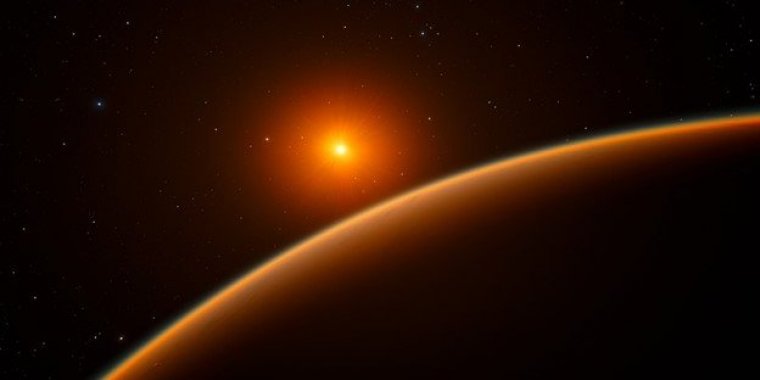| News / Science News |
Can super-Earths' interior dynamics set the table for habitability?
New research led by Yingwei Fei of the Carnegie Institution for Science provides a framework for understanding the interiors of super-Earths -- rocky exoplanets between 1.5 and 2 times the size of our home planet -- a prerequisite for assessing their potential for habitability. Planets of this size are among the most abundant in exoplanetary systems.

Artist's impression of the super-Earth exoplanet LHS 1140b. Photo: ESO
"Although observations of an exoplanet's atmospheric composition will be the first way to search for signatures of life beyond Earth, many aspects of a planet's surface habitability are influenced by what's happening beneath the planet's surface, and that's where researchers' long-standing expertise in the properties of rocky materials under extreme temperatures and pressures comes in," explained Carnegie Earth and Planets Laboratory director Richard Carlson.
On Earth, the interior dynamics and structure of the silicate mantle and metallic core drive plate tectonics and generate the geodynamo that powers our magnetic field and shields us from dangerous ionizing particles and cosmic rays. Life as we know it would be impossible without this protection. Similarly, super-Earths' interior dynamics and structure will shape their surface conditions.
With discoveries of a diversity of rocky exoplanets in recent decades, could there be massive super-Earths capable of creating conditions that are hospitable for life, and could they thrive?
Although knowledge of what's occurring beneath a super-Earth's surface is crucial for determining whether a distant world is capable of hosting life, the extreme conditions of super-Earth interiors challenge researchers' ability to probe the material properties of the minerals likely to exist there.
Now, a series of hypervelocity shockwave experiments on representative super-Earth mantle material has provided density and melting temperature measurements that will be fundamental for interpreting the observed masses of super-Earths.
"The ability to make these measurements is crucial to developing reliable models of the internal structure of super-Earths up to eight times our planet's mass," Fei said. (National Science Foundation)
YOU MAY ALSO LIKE





